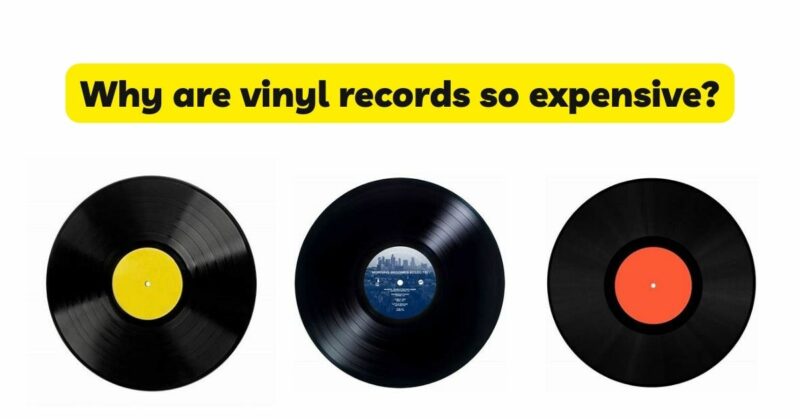Vinyl records, once considered relics of the past, have made an impressive resurgence in recent years. While their popularity has grown, so too have their prices. Vinyl enthusiasts and casual listeners alike often wonder why these nostalgic music mediums have become so expensive. In this article, we will delve into the factors contributing to the rising costs of vinyl records, exploring the demand and supply dynamics, manufacturing processes, and the allure of collecting these tangible treasures.
- The Resurgence of Vinyl: The resurgence of vinyl records can be attributed to several factors. Firstly, the tactile experience and the warm sound quality that vinyl provides captivate music enthusiasts seeking a more authentic and immersive experience. Additionally, the resurgence is driven by nostalgia, with younger generations discovering and embracing the unique charm of vinyl records.
- Limited Supply: One of the key reasons behind the high prices of vinyl records is the limited supply. With the decline in vinyl production during the digital age, many pressing plants shut down, resulting in fewer manufacturers and reduced overall capacity. As a result, the supply of vinyl records has not been able to keep up with the growing demand, driving prices upwards.
- Production Costs: The production of vinyl records involves various intricate and time-consuming processes. From mastering the audio and creating the master disc to pressing and packaging, each step requires skilled labor and specialized equipment. The scarcity of skilled workers and the costs associated with maintaining and operating vinyl pressing machines contribute to the overall production expenses, thereby impacting the final retail price.
- Premium Quality and Materials: Vinyl record collectors often seek high-quality pressings, which demand premium materials. Audiophiles prioritize heavyweight vinyl, superior jacket construction, and high-resolution artwork, all of which add to the production costs. Moreover, the increased demand for colored vinyl variants and limited edition releases further contributes to the price inflation due to the additional resources required for manufacturing these special editions.
- Artist Royalties and Licensing: Another aspect impacting the cost of vinyl records is the inclusion of artist royalties and licensing fees. Record labels and artists invest in the production, promotion, and distribution of vinyl records, necessitating compensation for their creative contributions. These expenses are factored into the retail price, increasing the overall cost of the records.
- Collectibility and Rarity: Vinyl records have become highly collectible items, with collectors valuing limited editions, rare releases, and albums from iconic artists. The allure of owning a piece of music history, combined with the scarcity of certain records, drives up their prices in the collector’s market. Furthermore, the resale market for vinyl records has also contributed to price increases, as rare and sought-after albums often fetch high prices in online auctions and specialized marketplaces.
- Packaging and Extras: Vinyl records are renowned for their elaborate packaging, including gatefold sleeves, lyric booklets, posters, and other extras. The production and inclusion of these additional elements add value to the records but also increase their cost. Collectors appreciate the aesthetic appeal and the comprehensive experience provided by these bonus items, contributing to the desirability and pricing of vinyl records.
- Cultural Significance and Sentimental Value: Vinyl records hold a significant place in music history and carry sentimental value for many individuals. They evoke nostalgia and are seen as tangible artifacts of a bygone era. The emotional connection associated with vinyl records fuels the demand, enabling sellers to charge higher prices for the cultural and sentimental significance they hold.
Conclusion: The increasing popularity of vinyl records, coupled with limited supply, intricate production processes, premium materials, artist royalties, and collectible value, have all contributed to their rising prices. While vinyl records may appear expensive to some, the investment is often justified by the tangible and nostalgic experience they offer, the rarity of certain releases, and their role as collectible pieces. As the vinyl revival continues, it is likely that prices will remain high, catering to the passionate community of collectors and enthusiasts who appreciate the enduring allure of this iconic music medium.


